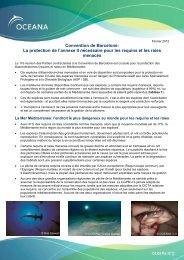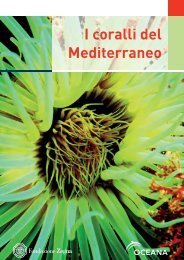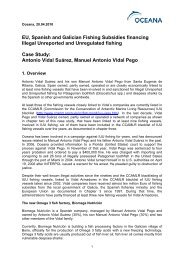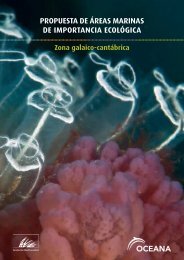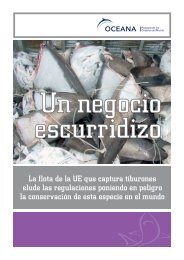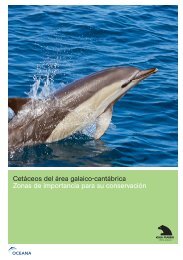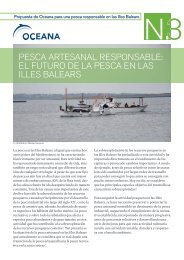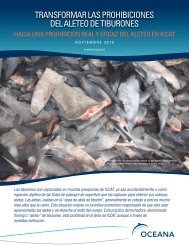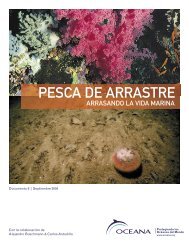Download - Oceana
Download - Oceana
Download - Oceana
You also want an ePaper? Increase the reach of your titles
YUMPU automatically turns print PDFs into web optimized ePapers that Google loves.
CRUSTACEA<br />
Palinurus elephas<br />
ECHINODERMATA<br />
Centrostephanus longispinus Holothuria forskali<br />
Diadema antillarum Holothuria tubulosa<br />
Hacelia superba<br />
FORAMINIFERA<br />
Miniacina miniacea<br />
CHORDATA: TUNICATA<br />
Diazona violacea<br />
CHORDATA: PISCES<br />
Anthias anthias Muraena helena<br />
Capros aper Phycis phycis<br />
Coris julis Pontinus kuhlii<br />
Helicolenus dactylopterus Serranus atricauda<br />
AREAS WHERE THIS HABITAT IS PRESENT AND DOCUMENTED BY OCEANA<br />
LOCATION COUNTRY COORDINATES<br />
Gettysburg, Gorringe Bank Portugal 36º 30,66620’N 11º 35,49880’W<br />
Ormonde, Gorringe Bank Portugal 36º 44,79590’N 11º 05,20590’W<br />
Ormonde, Gorringe Bank Portugal 36º 44,90280’N 11º 03,54480’W<br />
Ormonde, Gorringe Bank Portugal 36º 42,81590’N 11º 03,63730’W<br />
In some cases, fields of Viminella flagellum mix with other species, creating mixed gardens of gorgonians<br />
and sponges:<br />
4.5.1 Mixed garden of Callogorgia verticillata, Viminella flagellum, Tedania sp. and other<br />
demosponges<br />
These mixed fields where gorgonians and sponges are predominant develop on mixed, sandy-rocky<br />
bottoms. Sea urchins (Centrostephanus longispinus) are abundant, as well as shoal of Anthias anthias.<br />
DEPTH: 135 - 150 m<br />
TYPE OF SUBSTRATE: The species that make up this garden develop on rocky substrate, on a sandyrocky<br />
mixed bottom.<br />
40



